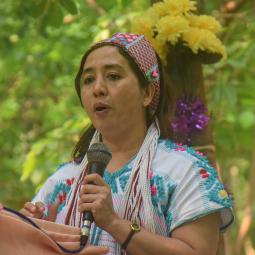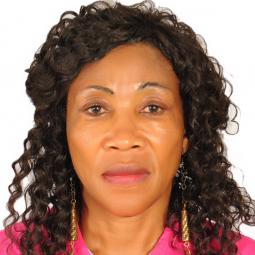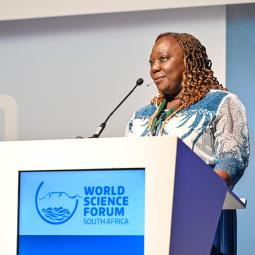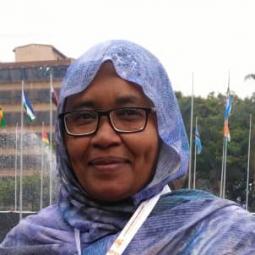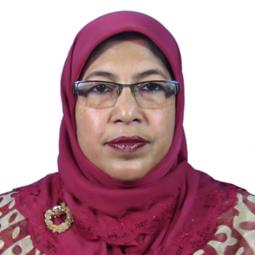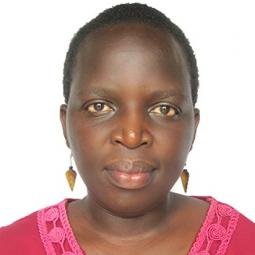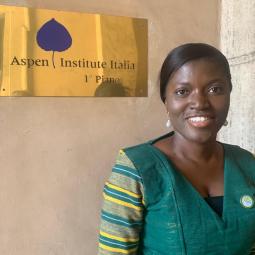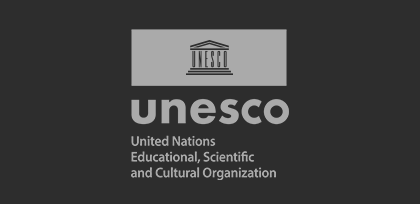OWSD NIgeria National Chapter presents Status of gender in climate change-related policies in the African agricultural sector; Outcome of policy review using the Adapted GAPo Tool
October 19, 2024
OWSD Nigeria University of PortHarcourt Branch Series of Scientific Communication: Status of gender in climate change-related policies in the African agricultural sector
Status of gender in climate change-related policies in the African agricultural sector; Outcome of policy review using the Adapted GAPo Tool
1Ifeanyi-obi, C.C., 2Akachukwu, D., 3Malongo M.M., 4Chilongo, G., 5Chinguo Munthali C.M & 6Kalele, D.
1University of Port Harcourt, Rivers State, Nigeria
2Micheal Okpara University of Agriculture, Umudike, Abia State, Nigeria
3 Ministry of Agriculture and Livestock- Homa Bay County Government, Kenya
4 ShareWorld University, Malawi
5 Ministry of Natural Resources and Climate Change, Malawi
6 African Centre for Technology Studies, Kenya
Introduction
Globally, agrifood systems employ a significant proportion of women and make up a key livelihood means for women (Food and Agriculture Organisation (FAO, 2023). In the African Continent, women play a crucial role in the agricultural sector, producing between 60% to 80% of the continent’s food. They consist of over 60% of the small-scale farmers and provide a significant proportion of the rural agricultural labor force up to 70% in some countries like Nigeria (Nigeria Federal Ministry of Agriculture, 2019). Women are active key players in the overall agricultural value chain but play prominent roles in production, harvesting, processing, storage, and marketing. Despite these critical roles of women in the agricultural sector in the continent, they often suffer marginalization in access to information and resources as well as at the decision-making table.
In the same vein, the Global Health 50/50 (2022) noted that women experience the impact of the food systems crisis more than men. Hence, they are more food insecure, have less access to farm assets, particularly land, have less voice in the decision-making process, and have less access to information and agricultural advisory services. As climate change effects intensify, exposing small-scale farmers who are mainly women to severe losses and reduced productivity, it becomes even more critical to review the state of African women in agriculture with the view to map roadmaps to a more inclusive and equitable agricultural sector in the continent. This policy review was done with the intent of obtaining credible evidence on the status of gender in existing agricultural policies in Nigeria, Kenya, and Malawi. It is part of the Policy Innovation Project (PIP) activities of Fellows of the African Women in Agricultural Research and Development (AWARD) under the Gender Responsive Agricultural Systems Policy (GRASP) Fellowship. Nineteen Policies of three African Countries, namely, Nigeria (6), Kenya (7), and Malawi (6) were reviewed using the Adapted GAPO Tool. Based on the review outcome, an actionable roadmap for mainstreaming gender into climate change adaptation actions of these countries was developed.
Overview of Climate change and its impacts on agricultural activities in Africa
Climate change poses a significant threat to agricultural activities in Africa, where the majority of the population relies on farming for their livelihoods. The continent's agriculture is predominantly rain-fed, making it highly vulnerable to climate variability and change (IPCC, 2021). Changes in temperature and precipitation patterns, as well as the increased frequency of extreme weather events, are expected to exacerbate existing challenges in the agricultural sector, impacting food security, economic stability, and the livelihoods of millions of people.
Rising temperatures and changing precipitation patterns are among the most direct consequences of climate change affecting agriculture in Africa. According to the IPCC (2021), average temperatures across the continent have increased over the past century, and further warming is projected. These temperature increases can lead to heat stress on crops and livestock, reduce yields, and increase the prevalence of pests and diseases (Lobell et al., 2021). In addition to rising temperatures, changes in precipitation patterns are also critical. Many regions in Africa are experiencing shifts in rainfall distribution, with some areas facing more prolonged dry spells and others experiencing increased rainfall and flooding (Niang et al., 2021). These changes can disrupt planting and harvesting cycles, reduce soil fertility, and increase soil erosion, all of which negatively impact agricultural productivity.
Furthermore, the increased frequency and intensity of extreme weather events such as droughts, floods, and storms pose another significant threat to African agriculture. Droughts, in particular, are becoming more common and severe, leading to water scarcity and reduced agricultural output (Sheffield & Wood, 2020). Flooding is also a growing concern, as it can destroy crops, erode topsoil, and damage infrastructure critical for agricultural production and distribution (FAO, 2021). The increased frequency of storms and cyclones further exacerbates these challenges, causing direct damage to crops and agricultural infrastructure, and leading to longer-term impacts on soil quality and farm viability.
Resilience strategies and interventions in African Agriculture
Resilience in agriculture is defined as a "combination of three capacities which determine how and the extent to which individuals, households, communities, and institutions can cope with and adapt to climate change impacts" (FAO, 2016). These capacities encompass adaptive capacity, which involves coping strategies, risk management, and saving groups; absorptive capacity, which includes the effective use of assets, motivation, livelihood diversification, and human capital; and transformative capacity, which covers policies and regulations, governance mechanisms, infrastructure, community networks, and formal safety nets. To enhance resilience in agriculture and food systems, it is essential to integrate measures that reduce vulnerability to droughts, pests, diseases, and other climate-related risks. In Africa, adapting farming systems to climate change is a key strategy for enhancing resilience (Asayehegn et al., 2017). Strategies employed to boost crop production involve modifying agronomic practices, such as adjusting planting dates, using early-maturing and drought-tolerant crop varieties, and diversifying crop types and livelihood options (Asrat and Simane, 2017). Similarly, Okoronkwo et al. (2024) reported that farmers in sub-Saharan Africa have also practiced crop rotation, organic manuring, cover cropping, mixed cropping, bush fallow system, intercropping, integrated crop-animal farming as well as traditional organic composting as adaptive approaches to cope with climate change. Also, agroforestry is widely practiced across Africa and has shown the potential to significantly benefit farmers' livelihoods and enhance climate resilience (Nyaruai, 2016). Agroforestry practices, which include growing trees alongside crops, offer several advantages.
In animal breeding, increasing genetic diversity is a vital adaptation strategy. By incorporating a broader range of traits, animals can better withstand environmental stresses, diseases, and genetic alterations. This approach enhances growth performance, reproductive capacity, and water efficiency, particularly in drought-prone environments (Bhalerao et al., 2021). For instance, cattle with diverse genetic backgrounds have demonstrated improved resilience to environmental stress and evolving challenges (Tian et al., 2023). Additionally, new shelters that regulate temperature, humidity, and ventilation have been shown to improve animal health and performance under changing climate conditions (Smith et al., 2022).
Expanding grazing areas and using crop residues are effective strategies for managing pressure on existing lands. Planting forage crops offers a novel approach to ensuring animal food security and reducing dependence on naturally available forage (Herrero et al., 2021). Additionally, purchasing feeds from various sources helps supplement local feed supplies during times of scarcity (Karimi et al., 2017). Silage is a reliable feed source during periods of scarcity and climate variability (Lindoso, 2013). Adjusting the number of animals to match available resources and using alternative feed ingredients, such as plant by-products, supports long-term resilience (Keshavarz & Moqadas, 2021).
Mainstreaming Gender into Agro-Adaptation Actions and Policies
Climate change is a major environmental factor that greatly impacts the sector and is also a major contributor to gender inequalities especially among rural communities in developing countries (Brayan & Ringler, 2023; FAO, 2024). Climate change impacts people differently. Men and women, in various communities and countries face different climate change challenges and also adapt differently (FAO, 2024). Women in particular are uniquely vulnerable to climate change and have important contributions to increasing the climate resilience of the agri-food sector (Meinzen-Dick et al, 2014). Despite the vital contribution of women in African agriculture, they often face significant challenges in adapting to climate change due to gender disparities (FAO, 2024). Women in Kenya, Malawi, and Nigeria have limited access to land, credit, agricultural inputs, and extension services compared to men, this significantly affects women’s adaptations to the impact of climate change (FAO, 2018; Fortnam et al, 2019; Meinzen-Dick et al, 2014; Ifeanyi-obi, 2023). Challenges to mainstreaming gender in climate change adaptation strategies include unbalanced structural setups for decision-making in the socio-economic spheres and legal frameworks, limited legal ownership and access to productive resources and climate information as well as prohibitive cultural traditions and social norms have increased vulnerabilities in the sector (FAO, 2023; Meinzen-Dick et al, 2014). These disparities hinder women’s ability to adopt climate-smart agriculture (CSA) and benefit from adaptation measures. FAO report 2023 on the Status of Women in Agri-food systems, indicates that promotion of policy interventions that strengthen women’s voices on access to productive resources can reduce the gender gap. Enabling women to acquire a voice in climate change resilience requires transformations in agricultural policy to empower them to develop capacity in the design, formulation, and implementation of adaptation structures for specific well-being outcomes for different gender groups. Very few smallholder women are aware of and understand existing policies on agro adaptations (FAO, 2024; UN-Women Report, 2017). To combat gender inequalities and inequities arising from climate change impact, governments and institutions must ensure that gender mainstreaming in adaptation strategies, programs, and projects is adequately funded for rapid gender inclusion (Intergovernmental Panel on Climate Change, 2007; Ifeanyi-obi, 2020).
Status of gender in climate-related policies in the African agricultural sector; outcome of Adapted GAPo tool analysis
Policies are crucial to stirring and supporting meaningful actions, particularly in the agricultural sector which is practiced mainly by rural dwellers who integrate various traditional beliefs and cultures that negate the place of women in society.
To assess the status of gender in climate-related policies in the African agricultural sector, the GAPo Tool developed by the Food and Agriculture Organisation (FAO) was adjusted to properly capture key thematic areas in climate change adaptation. The adjustment was done in the sections two and three. Section two was adjusted to capture nine key areas in climate adaptation. For section three, the Gender continuum which classify policies based on the extent of integration of gender issues into the policy was used.
Findings show that Agricultural policies of these three countries considerably recognize women’s roles and challenges in agriculture and rural development (68.4%), but measures to address gender-based violence (GBV) were lacking (10.5%) in most of the policies particularly in Nigeria (0%) & Kenya (0%). Also, measures to address gender inequality were integrated into the policies across the three countries (63.2%) but were not given enough priority to be included as an explicit policy objective (36.7%). Despite the emphasis on the utilization of sex-disaggregated data for policy decisions, the agricultural policies of the three countries reviewed poorly promoted the use of sex-disaggregated data for policy monitoring and evaluation (26.3%), a majority (36.8%) of the policies reviewed do not include budget lines for the gender activities proposed.
Of the nine thematic areas of climate change adaptation used for this review, gender consideration on access to climate information, services, and climate-smart technologies (32%), capacity building and education on climate adaptation (31%) and access and ownership of agricultural assets including land (36%) were relatively integrated. Finally, the policies were classified using the five categories of the gender continuum. On average, 47.4% of the policies reviewed were gender accommodative, 26.3% were gender-sensitive, 15.8% were gender responsive and 10.5% were gender blind.
Conclusion
The need for gender-responsive policies guiding adaptation actions and interventions in the agricultural sector cannot be over-emphasized. This review showed that African countries have made appreciable efforts in mainstreaming gender considerations into climate change-related policies. It is interesting to find that all countries reviewed have a gender policy in Agriculture. Unfortunately, adequate measures are yet to be put in place to ensure the implementation of these gender components contained in the various policies. This calls for increased effort on all actors, particularly the government. Policy development and enactment without implementation cannot produce the desired change and improvement in the agricultural sector. It is important to integrate clear measures as well as allocate sufficient resources to facilitate the implementation of the policies enacted.
References
Asrat, P. & Simane, B. (2017). Adaptation of agronomic practices to climate change: Adjusting cropping calendars, using resilient crop varieties, and diversifying livelihoods in Africa. Climate Change and Agriculture Journal, 39(1): 67-85.
Bryan, E. & Ringler, C. (2023). Feeding Africa: how small-scale irrigation can help farmers to change the game.
Bhalerao, D. P., Kumar, R., Arora, R. & Hafeez, M. (2021). Applying bovine manure to ponds, using higher-quality species, and changing the harvest schedule: A climate-resilient strategy in integrated aquaculture and livestock production. Aquaculture Reports, 20: 100700.
FAO 2023 report: The status of women in agri-food systems
FAO (2016). The State of Food and Agriculture. Climate Change, Agriculture and Food Security. Rome, Italy. Available at www.fao.org/publications
FAO. (2021). The Impact of Disasters on Agriculture and Food Security. Food and Agriculture Organization of the United Nations.
FAO 2024 report: The Unjust Climate; Measuring the Impact of Climate Change on Rural poor, Youth and Women.
Federal Ministry of Agriculture and Rural Development (2019). Gender Policy in Agriculture
Fortnam, M., Brown, K., Chaigneau, T., Crona, B., Daw, T.M., Gonçalves, D., Hicks, C., Revmatas, M., Sandbrook, C., & Schulte-Herbruggen, B. 2019. The gendered nature of ecosystem services. Ecological Economics, 159: 312-325. https://doi.org/10.1016/j.ecolecon.2018.12.018).
Global Health 50/50, the International Food Policy Research Institute, UN Women, ‘Hungry for Gender Equality:
The Global Food 50/50 Report 2022’, Washington D.C.: 2022. https://doi.org/10.56649/WIQE2012
Herrero, M., Thornton, P. K., Mason-D’Croz, D., Palmer, J., Benton, T. G., Bodirsky, B. L., Weindl, I., Baudron, F., Bogard, J. R., Hall, A., Hillier, J. & Havlik, P. (2021). Innovation can accelerate the transition towards sustainable livestock systems. Nature Food, 2(7), 401-403.
IPCC, 2007: Climate Change 2007: Synthesis Report. Contribution of Working Groups I, II and III to the Fourth Assessment Report of the Intergovernmental Panel on Climate Change [Core Writing Team, Pachauri, R.K and Reisinger, A. (eds.)]. IPCC, Geneva, Switzerland, 104 pp.
IPCC. (2021). Climate Change 2021: Impacts, Adaptation, and Vulnerability. Part B: Regional Aspects. Contribution of Working Group II to the Sixth Assessment Report of the Intergovernmental Panel on Climate Change. Cambridge University Press
Ifeanyi-obi, C. C. (2023) How are Rural Women Crop Farmers in Southern Nigeria Coping with Climate Change. FARA Research Report, 7(39):497-509. https://doi.org/10.59101/frr072339
Ifeanyi-obi, C.C. Strengthening Climate Change Adaptation Capacity of Farmers in Nigeria: Path to Attaining Agriculture Promotion Policy (APP) and Nation’s Food Security Agenda. Policy Brief published December 2020. Agricultural Economics and Extension Research Studies (AGEERS), 8 (2), 130-137
Keshavarz, K. and Moqadas, H. (2021). Reducing the number of animals and changing feed ingredients: A climate-resilient strategy for sustainable livestock production. Renewable Agriculture and Food Systems, 36(5): 476-485.
Lindoso, R. S. (2013). Silage as a climate-resilient strategy for animal production. Animal Feed Science and Technology, 182(1-4): 32-37.
Lobell, D. B., Burke, M. B., Tebaldi, C., Mastrandrea, M. D., Falcon, W. P., & Naylor, R. L. (2021). Prioritizing Climate Change Adaptation Needs for Food Security in 2030. Science, 371(6524), 245-249.
Meinzen-Dick, R., Johnson, N., Quisumbing, A.R., Njuki, J., Behrman, J.A., Rubin, D., Peterman, A., Waithanji, E., 2014. The Gender Asset Gap and Its Implications for Agricultural and Rural Development, In: Quisumbing, A.R., Meinzen-Dick, R., Raney, T.L., Croppenstedt, A., Behrman, J.A., Peterman, A. (Eds.), Gender in Agriculture. Springer Netherlands, Dordrecht, 91–115. https://doi.org/10.1007/978-94- 017- 8616-4_5
Nyaruai, M.A. (2016). The potential of agroforestry as an adaptation strategy to mitigate the impacts of climate change: a case study of Kiine community - Kirinyaga county. M.Sc Thesis, University of Nairobi.
Niang, I., Ruppel, O. C., Abdrabo, M. A., Essel, A., Lennard, C., Padgham, J., & Urquhart, P. (2021). Africa. In: Climate Change 2021: Impacts, Adaptation, and Vulnerability. Part B: Regional Aspects. Contribution of Working Group II to the Sixth Assessment Report of the Intergovernmental Panel on Climate Change. Cambridge University Press.
Okoronkwo, D. J., Ozioko, R. I., Ugwoke, R. U., Nwagbo, U. V., Nwobodo, C., Ugwu, C. H., Okoro, G. G. and Mbah, E. C. (2024). Climate smart agriculture? Adaptation strategies of traditional agriculture to climate change in sub-Saharan Africa. Front. Clim. 6:1272320.
Sheffield, J., & Wood, E. F. (2020). Global Trends and Variability in Soil Moisture and Drought Characteristics, 1950–2018, from Observation-Driven Simulations of the Terrestrial Hydrologic Cycle. Journal of Climate, 33(3), 432-458.
Smith, J., Brown, K., Johnson, M. and Thompson, L. (2022). Sustainable livestock production in a changing climate. Journal of Animal Science, 100(4): 1234-1247.
Tian, R., Asadollahpour Nanaie, H., Wang, X. et al. (2023). Genomic adaptation to extreme climate conditions in beef cattle as a consequence of cross-breeding program. BMC Genomics 24(186): 1-10.
UN-Women Report (2017): Securing Rights of Women Farmers: Developing a Roadmap for Action.








